For about 18 months, the mystery of the antique bed had gone unsolved. I thought of several ways to put its pieces together, but my ideas all involved drilling holes. I kept buying hardware, spending a small fortune. The pieces of the bed should fit together. What was missing?
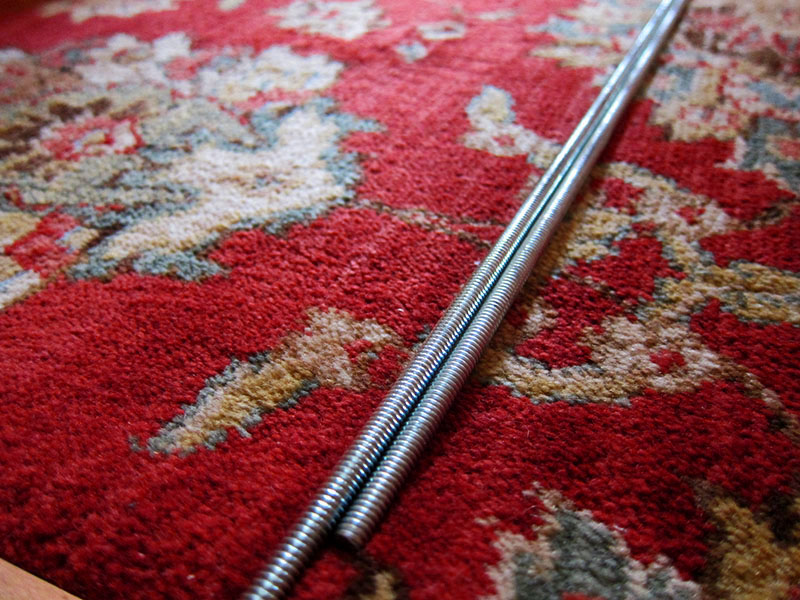 Finally, I asked a contractor. He said the bed was meant to be put together using long threaded metal rods. The rods rest inside the grooved rails. Fittings attach them to the ends of the bed.
Finally, I asked a contractor. He said the bed was meant to be put together using long threaded metal rods. The rods rest inside the grooved rails. Fittings attach them to the ends of the bed.

Initially, he cut the rods to a length somewhat in excess of what he thought was needed. One end of each rod had to be fitted with a hook deep enough to latch onto the rod recessed inside the wooden foot-board. He bought a hook he thought was the right size but had to cut off a small piece of it so that it would pivot and catch properly.
He also measured to make sure that when the hook was embedded, the rod would fit squarely in the groove inside of the bed rail (see top picture). Hence the blue tape.
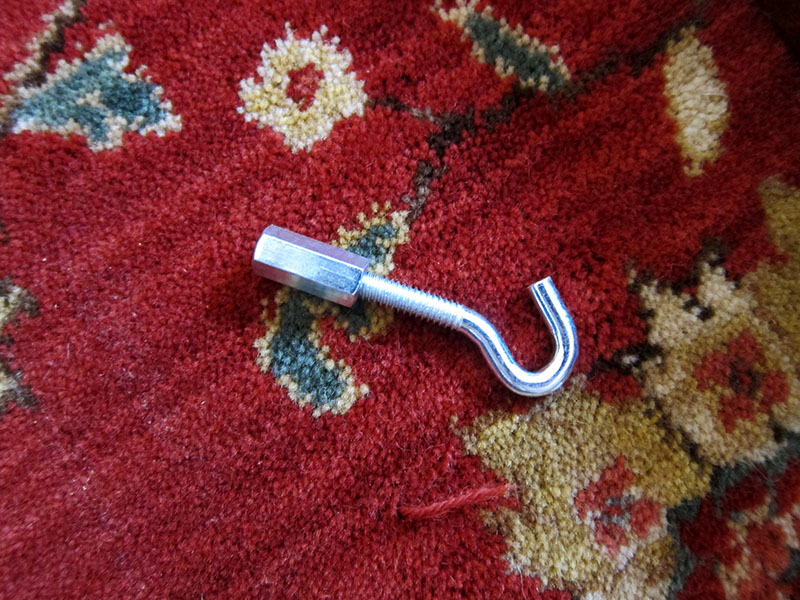 Then he connected the hook to the rod with a threaded fitting.
Then he connected the hook to the rod with a threaded fitting.
Once the rods were attached to the foot-board, it was easy to attach the headboard to them. Each rod, which had been cut down to roughly an inch longer than it needed to be, was threaded through the middle hole on one leg of the headboard, while the dowels of the bed-rails fit into the top and bottom holes. All that remained was to fasten the rod from the reverse side of the headboard, where the hole is recessed to hide a 1-inch washer and nut. The rod has to be screwed very tight in order to keep the bed frame from shifting or creaking.
After the frame was assembled, we laid slats across the rails and set an ordinary boxspring on top of them. The bed is evidently not too old, since it’s perfectly sized to hold a standard twin mattress set.
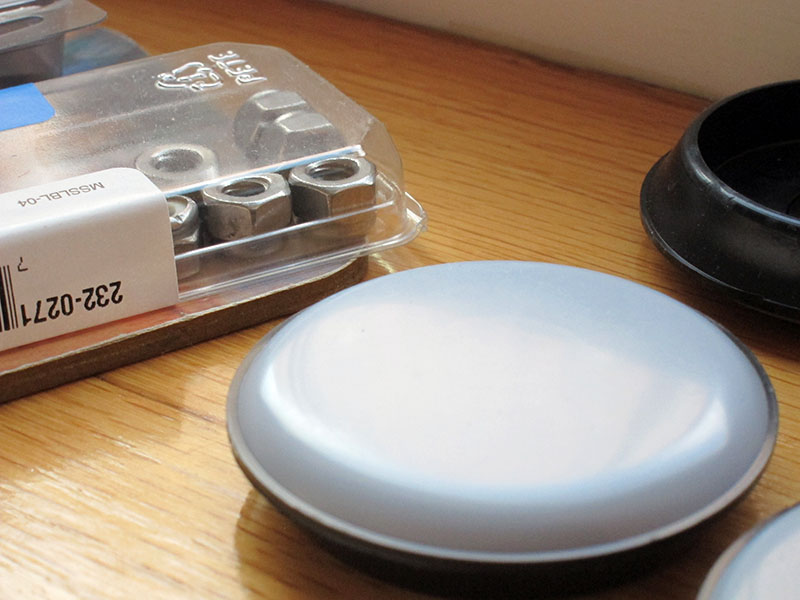 When the bed was set up, I made sure that each of its legs was resting on a loose furniture caster. I experimented with many kinds, but the best by far are the large light grey ones that look a little bit like flying saucers. They are cupped on the top to keep the legs from slipping off, but the gray surface slides easily across pile carpeting.
When the bed was set up, I made sure that each of its legs was resting on a loose furniture caster. I experimented with many kinds, but the best by far are the large light grey ones that look a little bit like flying saucers. They are cupped on the top to keep the legs from slipping off, but the gray surface slides easily across pile carpeting.

Even with casters, two persons rather than one are needed to move the bed around, to avoid the parts of the frame getting out of kilter.
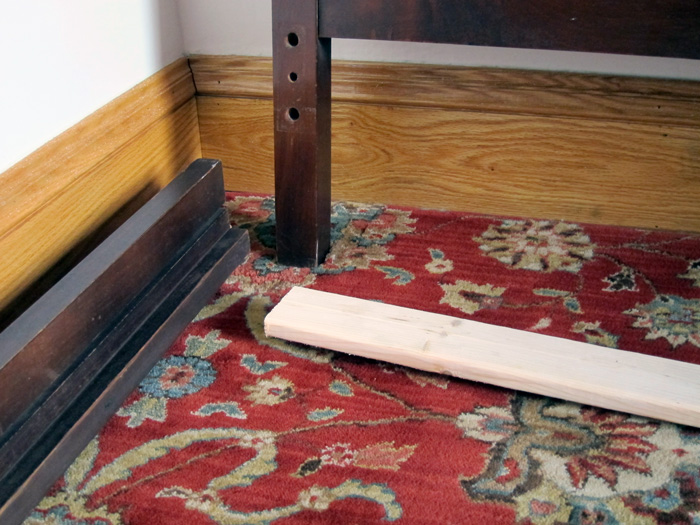
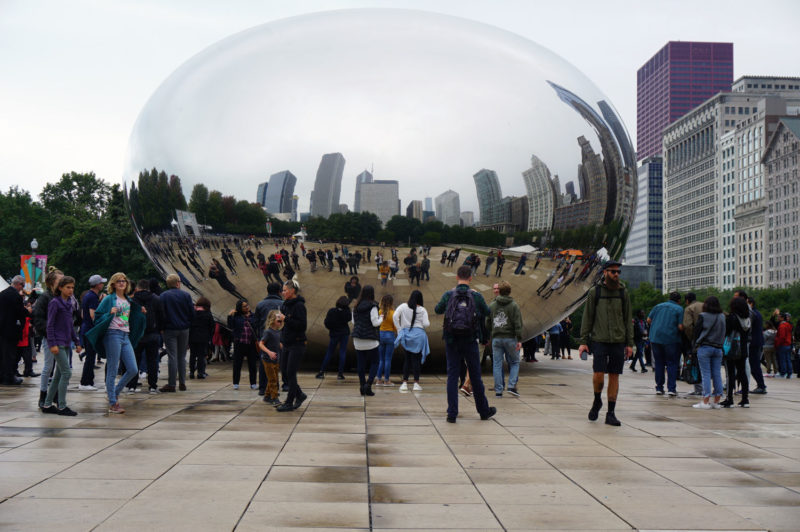
Lauren says
Thank you for this post! Now i can finally put my daughter’s bed together!
Celia says
It isn’t hard; just takes some teamwork and measuring–good luck!
harley says
What a complicated process! How old do you figure that bed frame is? …..By the by, I sure like the way it looks.
Celia says
Initially, the rails misled me into thinking it might be a ‘rope bed.’ Were that the case, the bed would be very old. But the fact that it was made to fit what is now a standardized twin-bed size suggests it was made after those standards were in place. I’m thinking the 1920s.
Another clue has to do with how the wood pieces and ornament of the bed were made. Were they machine made, or fashioned by hand? Although a bed of this style might have been made in the mid-nineteenth century, I’m pretty sure machines were used in making most of its parts. That would make it a product of the late nineteenth century at the earliest.
A final clue to the age of wood furniture is a shellac finish, which was prevalent between 1820 and 1920. After that, shellac went out of use. If a test shows that your furniture is finished with shellac, it was likely made within that time frame.
http://news.thefinishingstore.com/index.php/tip-dating-furniture-by-the-finish-used/
I can’t vouch for all this, but this is what I’ve learned from the internet and used to judge the age of the bed.